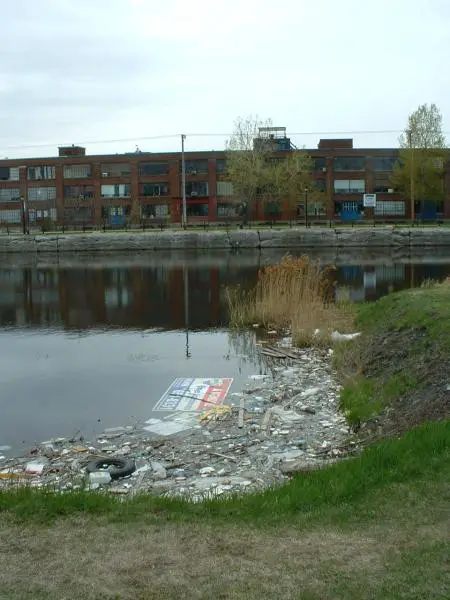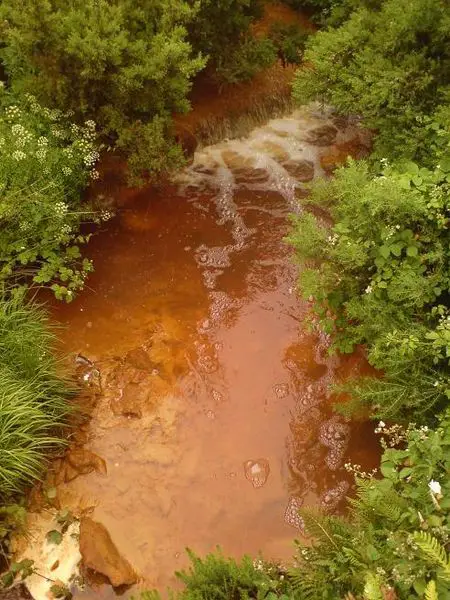Water pollution happens when the quality of the water in streams, rivers, lakes, and oceans is altered so that it is toxic to humans and animals in the environment. Water is vulnerable to being polluted because it easily dissolves most other liquids.

Types of Water Sources
Groundwater
Rain and melted snow gradually leaches into the ground and eventually ends up in the underground water systems or aquifer. Underground water systems are the source of most water that is used for drinking water, especially in rural areas.
Contaminants such as pesticides, herbicides, and fertilizers, and other toxic chemicals are absorbed by rain, they act as pollutants. Once polluted, this water can remain undrinkable for decades and sometimes forever.
As this underground water makes its way into rivers and oceans, it spreads its toxins.
Surface water
If you look at a map of the world, you will notice that about 70% of the earth’s surface is water. This includes bodies of fresh water as well as oceans. Fresh water is what the human and animal populations of the world use as drinking water if they do not have access to underground sources.
Recent governmental surveys indicate that almost half of the rivers and streams and one-third of the lakes are unfit for drinking, swimming, and fishing due to nitrate and phosphate toxins from municipal and industrial waste, farm waste, and fertilizer runoff.
Added to this pollution is the junk and debris that humans throw into the waterways, such as garbage, tin cans, plastic, old bikes, car parts, etc.

Oceans
Most of the pollution in the oceans have come from land. Chemicals and other pollutants are carried along streams, rivers, and storm drains and eventually end up out at sea. One of the most frightening pollutants in the oceans is plastic.
Enormous islands of plastic are floating at sea and will remain there to eternity. Shipping traffic has increased in the last 75 to 80 years and these ships carry thousands of tons of toxic materials including oil.
There have been many catastrophic oil spills over the years which cause damage to shorelines, marine animals, and birds. Some of the damage takes years to repair.
Sources of Water Pollution
Agriculture operations are one of the largest users of fresh water, but are also the major cause of fresh water and groundwater pollution. Each time it rains, livestock waste, fertilizers, pesticides, and herbicides, and other pathogens are washed into the soil and into streams, rivers, and lakes.
This causes excess nitrogen and phosphorus in the water that can cause algae blooms making the water unfit for any animal or human to drink.

Sewage and waste water from homes and industry causes untold damage to water sources. An example of this is the illegal dumping of effluent; this is wastewater from sewers, oil refineries, and waste treatment plants which contain toxic chemicals, metals, and solvents.
Another source of water pollution is storm water runoff. This is road salts, oils, grease, and various chemicals and debris that is carried from roads after rain has fallen and ends up in storm sewers, which is then carried to fresh water or to the oceans.
Warnings
By the United Nations estimate, more that 80% of the world’s wastewater is sent back into the environment untreated. The Environmental Protection Agency in the U.S. has given a serious warning about old sewage treatment plants being overwhelmed or breaking down.
This could, in one year, catastrophically release more than 850 billion gallons of untreated sewage into fresh and ocean waters.
Questions:
- What are three types of water sources?
- How is groundwater affected by pollution?
- What is the aquifer?
- What is one of the greatest polluters of fresh and underground water?
- What is storm water runoff?

Answers:
- Two types of water pollution are groundwater, surface water, and oceans.
- When rain and snow melt, it leaches underground carrying pesticides, herbicides, fertilizers and other toxins.
- The aquifer is the water that is found in underground rivers and caverns.
- One of the greatest polluters of fresh and underground water is agriculture.
- Storm runoff is rain that carries road salts, oil, grease, and other chemicals into the storm sewers.